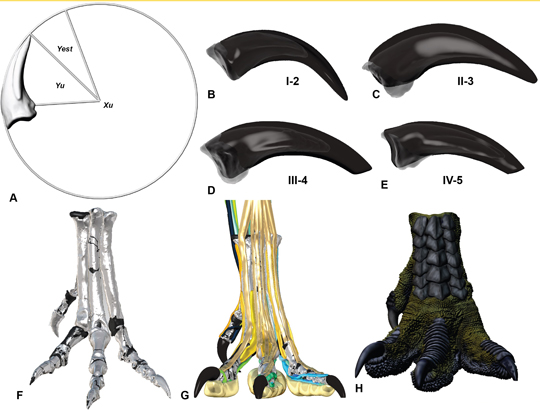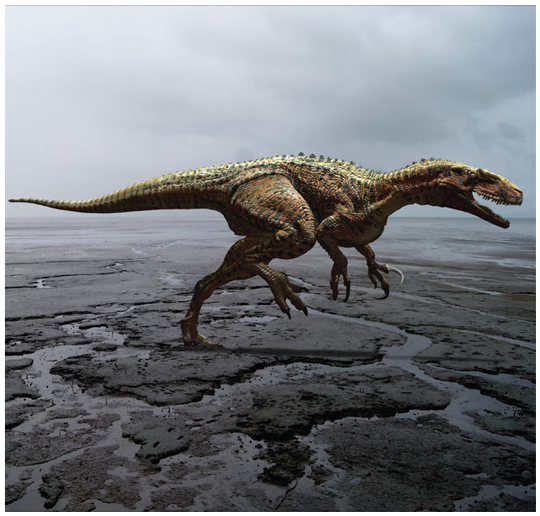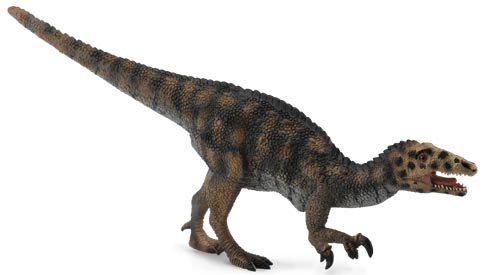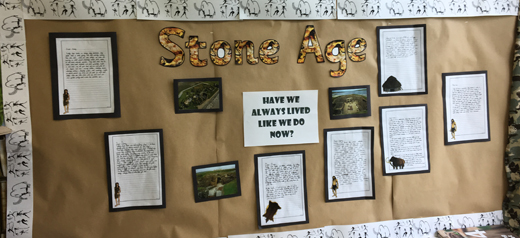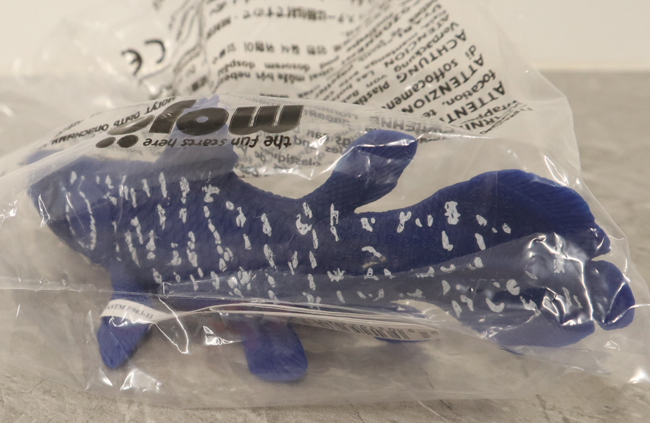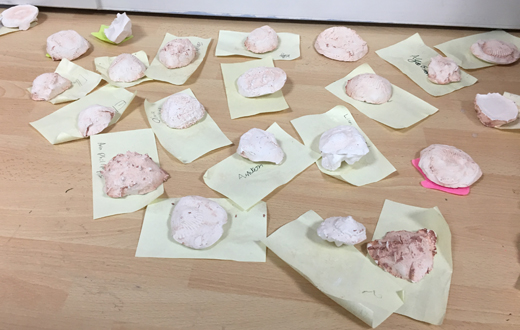Australovenator Steps into the Famous Lark Quarry Dinosaur Debate
Scientists Reconstruct Dinosaur Foot to Help Interpret Tracksite
The famous dinosaur tracks at Lark Quarry, (Dinosaur Stampede National Monument), near the town of Winton (Queensland, Australia), have been the subject of research for decades. Unlike dinosaur bones and teeth that can be transported a huge distance from the place where the dinosaur died, footprints and tracks preserve evidence of activity and behaviour. The majority of trace fossils provide direct, in situ evidence of the environment at the time and location where the animal was living.
Different Interpretations of the Dinosaur Tracks
At Everything Dinosaur, we think the first, formal attempt to interpret the numerous dinosaur tracks preserved in the finely grained sandstone at the Lark Quarry site took place in 1984. Eleven, large, three-toed prints were interpreted as having been made by a big meat-eating dinosaur that had lunged at a flock of small ornithopods that it had cornered.
The tracks were interpreted as a “dinosaur stampede” as the smaller plant-eating dinosaurs panicked and tried to avoid the jaws of a ten-metre-long theropod. The ichno genus (a name given to an animal known only from trace fossils), Tyrannosauropus was erected. Over the years, a number of other interpretations have been put forward, including the hypothesis that the big tri-dactyl prints don’t represent a predator but were made by a large ornithopod, something akin to a Muttaburrasaurus. Other interpretations of this famous fossil site include that the tracks were made by dinosaurs as they swam and waded across a body of water.
Swimming Dinosaurs Hypothesis: Dinosaurs Not Stampeding but Swimming.
No Tyrannosauropus at Lark Quarry After All: Lark Quarry Tracks Made by a Big Plant-Eating Dinosaur.
Dinosaur Foot Reconstruction – A New Analysis of the Tracks
Distinguishing between the three-toed prints of meat-eating dinosaurs and those of similar sized plant-eaters, which also walked on three toes is a tricky business. However, in an innovative piece of research, a team of scientists from from the University of Newcastle (New South Wales) and the Australian Age of Dinosaurs Museum of Natural History in Winton, set about reconstructing the foot of an Australian Theropod dinosaur Australovenator wintonensis in a bid to reproduce the tracks in similar sediment, which could then be compared to the fossil trackway.
Reconstructing the Foot of Australovenator
Picture credit: PeerJ
The picture above shows (A) calculating the claw length of Australovenator and (B-D) the four claws associated with the left foot of the dinosaur with reconstructed sheaths. The bones of the foot have been reconstructed (F) and using Emu feet for an anatomical comparison, (G) shows the foot reconstructed with tendons added, whilst (H) is the skin covered biologically restored foot (left pes) of Australovenator.
Australovenator wintonensis
A three-dimensional foot of Australovenator was created as fossils of this Megaraptoran theropod are known from similar aged strata as the Lark Quarry tracks. In addition, Australovenator is the only meat-eating dinosaur from Australia which has had its foot bones discovered. The researchers used a variety of substrates to test the prints, scuff marks and scratches made by the large dinosaur and they concluded that their recreated impressions were reminiscent of the trace fossils. This suggests that the eleven, large, three-toed tracks at Lake Quarry (now known as the Dinosaur Stampede National Monument), could have been made by an Australovenator-like carnivorous dinosaur.
An Illustration of Australovenator wintonensis Crossing the Lark Quarry Sediments
Picture credit: Travis R. Tischler
The CollectA Australovenator Dinosaur Model
Australovenator was a member of the Allosauria clade of theropod dinosaurs. Fossils of this six-metre-long carnivore were discovered in 2006. Although the fossil material was far from complete, the Australovenator genus was formally erected by Australian palaeontologist Scott Hucknull in 2009. CollectA introduced a model of Australovenator just three years after the scientific description. Models of Megaraptoran theropods are quite rare, it is great to see that CollectA have added an Australovenator replica to their “Prehistoric Life” model range.
To visit the Everything Dinosaur website: Everything Dinosaur.
The CollectA Australovenator Dinosaur Model
To view the full range of CollectA dinosaur and prehistoric animal models: CollectA Prehistoric Life Models.


